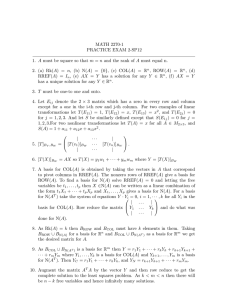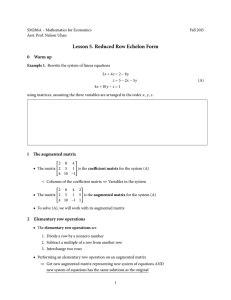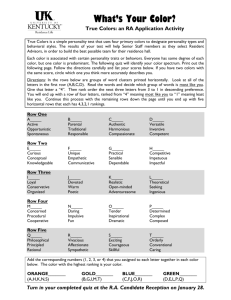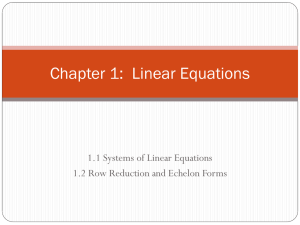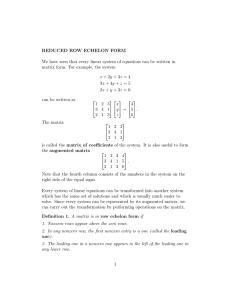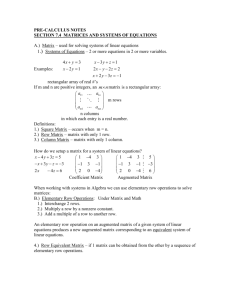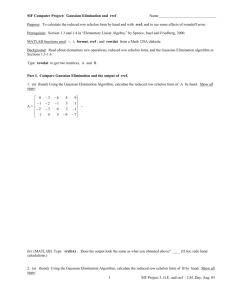The three types of solution sets:
advertisement
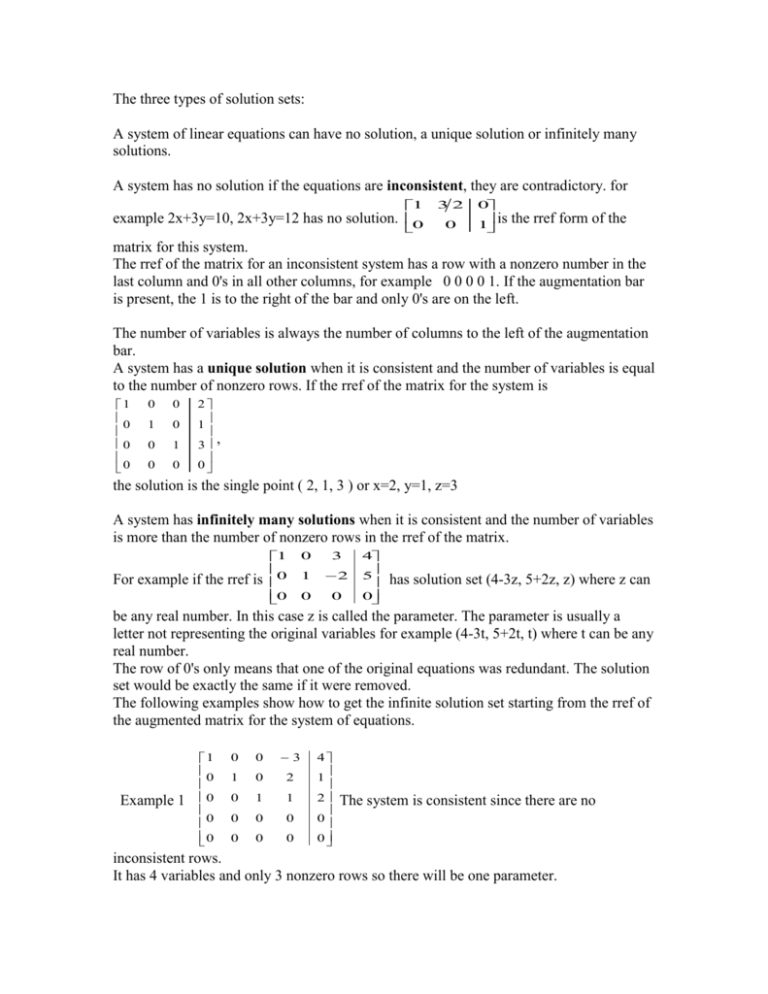
The three types of solution sets: A system of linear equations can have no solution, a unique solution or infinitely many solutions. A system has no solution if the equations are inconsistent, they are contradictory. for example 2x+3y=10, 2x+3y=12 has no solution. 1 0 32 0 0 is 1 the rref form of the matrix for this system. The rref of the matrix for an inconsistent system has a row with a nonzero number in the last column and 0's in all other columns, for example 0 0 0 0 1. If the augmentation bar is present, the 1 is to the right of the bar and only 0's are on the left. The number of variables is always the number of columns to the left of the augmentation bar. A system has a unique solution when it is consistent and the number of variables is equal to the number of nonzero rows. If the rref of the matrix for the system is 1 0 0 0 0 0 1 0 0 1 0 0 2 1 3 0 , the solution is the single point ( 2, 1, 3 ) or x=2, y=1, z=3 A system has infinitely many solutions when it is consistent and the number of variables is more than the number of nonzero rows in the rref of the matrix. For example if the rref is 1 0 0 0 3 1 2 0 0 4 5 0 has solution set (4-3z, 5+2z, z) where z can be any real number. In this case z is called the parameter. The parameter is usually a letter not representing the original variables for example (4-3t, 5+2t, t) where t can be any real number. The row of 0's only means that one of the original equations was redundant. The solution set would be exactly the same if it were removed. The following examples show how to get the infinite solution set starting from the rref of the augmented matrix for the system of equations. Example 1 1 0 0 0 0 0 0 3 1 0 2 0 1 1 0 0 0 0 0 0 4 1 2 0 0 The system is consistent since there are no inconsistent rows. It has 4 variables and only 3 nonzero rows so there will be one parameter. Write each row as an equation in the original variables and solve for the variables in terms of the parameter. row1 x -3w = 4, row 2 y +2w = 1, row3 z+w= 2. Because of the echelon form, the most convenient parameter is w. Solving each row equation in terms of w we have: x = 4 + 3w y = 1 - 2w z=2-w w can be any real number. Last of all put this into an ordered 4-tuple, (4+3w, 1-2w, 2-w, w) w can be any real number The textbook will write (4 + 3t, 1 - 2t, 2-t, t ) t is the parameter and can be any real number. Example 2. 1 0 2 3 4 0 1 1 5 7 This system is consistent and has two more variables than nonzero rows so it has two parameters. row 1 x + 2z -3w = 4 x = 4 - 2z +3w row 2 y - z +5w = 7 y = 7 +z - 5w The solution set is (4 - 2z + 3w, 7 + z - 5w, z, w ) where z and w can be any real numbers. The text book would write (4 - 2s + 3t, 7 + s - 5t, s , t ) s and t can be any real numbers.

